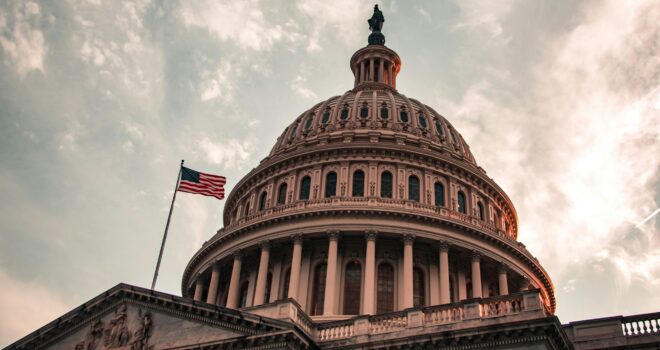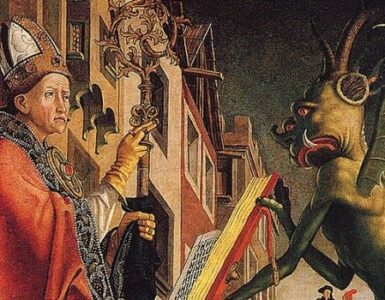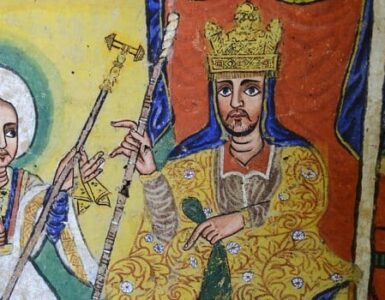Editor’s Note: This is the first half of a two-part series on making a pilgrimage to Washington, DC.
Washington, DC, is the seat of our constitutional, federal republic. Here, visitors can take in the great temples of our tripartite republic, specifically the U.S. Capitol Building, the White House, and the Supreme Court Building; lay eyes on the documents of our national founding; honor those men and women who have expressed and protected our highest ideals; and process and assess American history and innovation at some of the best museums in the world. If we are not too cynical, we can laud the American way of life that has fostered human flourishing at nearly every turn, even when we do not see the founding principles being implemented perfectly.
Still, there is a deeper and richer experience of the national capital, an experience at least as important and intriguing as the sights of our civic ideals, history, and government operations. In Washington, DC, there is a trove of treasures ready to aid any Christian disciple in cultivating a deeper and stronger faith and reminding us pilgrims that we live in two realms of citizenship. Indeed, there is great potential for all of us to come away knowing that we are citizens of the United States at the same time that we are, more importantly, citizens of the Kingdom of God.
Some of the most memorable treasures exist within the hallowed halls of the Capitol Building, which could feasibly double as an art museum. The inside of the Capitol Dome is painted with a fresco, titled The Apotheosis of Washington, completed in 1865 by Constantino Brumidi. It is an homage to the virtues that our first president brought to the office and the nation, and it is an invitation to Americans to imitate those virtues. Still, since apotheosis as a philosophical and theological concept means deification, pilgrims can understand that every person is invited to live heroic virtue, so that all disciples “may become partakers of the divine nature” (2 Pt. 1:3-8).
Below that dome fresco, there are eight paintings that juxtapose the Christian faith, the discovery of America, and the independence of our nation. Two paintings depict the Spanish explorers who brought the Catholic faith to the new world and aided in its spread throughout the continent. These allow us to recall Jesus’ Great Commission to make disciples “to the end of the earth” (Mt. 28:18-20). Another painting depicts the Baptism of Pocahantas at Jamestown, reminding us that any earthly citizenship is and ought to be elevated by heavenly citizenship. A third painting depicts the embarkation of Puritan pilgrims from Holland in 1620, providing a constant reminder that religious freedom is a foundational pillar of any statecraft guided by the natural law. Finally, four paintings by John Trumbull depict specific events from the War for Independence, beginning with the Declaration itself.
Also inside the Capitol, Statuary Hall also contains at least a couple connections to faith. Each state of the union is allowed to donate two statues to the collection, honoring persons and ideals that have been influential in that state’s history. California has chosen to honor St. Junipero Serra, the Franciscan friar who established Catholic missions for evangelization from San Diego in the south to Sonoma in the north. Soon, there will also be a statue from North Carolina of Billy Graham, the popular tele-evangelist who preached the Gospel to millions around the world during the last half of the twentieth century. These two statues remind us of the need, the mandate, to spread the Good News of Jesus Christ in whatever era of history we have been placed, and by whatever means are available to us. While our modern culture, even our government in recent history, may be hostile to the idea, we still are called to aid in cultivating a broader citizenship of the heavenly kingdom.
Between the Capitol Building and the White House, along Constitution Avenue, is the National Archives, the repository for our nation’s most important documents. The highlight of a visit to this hallowed hall is the opportunity to lay eyes on the Declaration of Independence, the Constitution, and the Bill of Rights. Nearby, there is also a copy of the Magna Carta produced in 1297.1 Taken together, these four documents trace the development of our American understanding of rights, liberties, and responsibilities. As we witness the documents and the development of ideas, it is important for us to keep in mind that the Constitution and Bill of Rights, “the supreme law of the land,” exist only to serve the Natural Law and the Eternal Divine Law, which were expressed in the two older documents.
The downtown area is also home to one of the great art museums in all the world. The National Gallery of Art contains a plethora of great works, too many to be recalled, which will remind pilgrims of their dual citizenship. In addition to great works of American art, there are at least a few extraordinary pieces from art history. The Temptation of Christ by Juan de Flandes reminds us that life in this world will be marked by a perpetual struggle against temptation and sin, and that the wiles of our greatest spiritual enemy can only be overcome by courageous fidelity to the Father’s plan. The Return of the Prodigal Son tells a story of merciful reconciliation into our heavenly kingdom after we have fallen through weakness, rejected our divine inheritance, and journeyed “into a far country” (Lk. 15:13). Amnon and Tamar by Giovanni Barbieri (known more commonly as Guercino) draws from a biblical episode to depict one specific aspect of humanity’s abuse of freedom. And, finally, The Baptism of Clovis by the Master of Saint Giles points us toward the mission of the heavenly Kingdom to bring the Gospel to all people who have not yet received the message of redemption. Spending an extended time in these galleries offers a wonderful opportunity to ponder the truth of God’s eternal plan, and how our lives might reflect that truth.
Multiple visits to our nation’s capital would not be enough to exhaust the rich treasures of the connection between federalism and faith. Those identified above are but the tip of the proverbial iceberg. Yet, no matter how much time a pilgrim is able to spend taking in these important sites, it helps to approach them with the understanding that we are not only citizens of a republic. More importantly, we are citizens of the Kingdom of Heaven, and we are called to transform the former in light of the latter.
Photo by Kyle Mills on Unsplash
1The Magna Carta was originally drafted and declared as law in 1215. This copy was written more than eight decades later to be officially entered into the Statute Rolls of England. It is one of only four surviving copies in the world.










